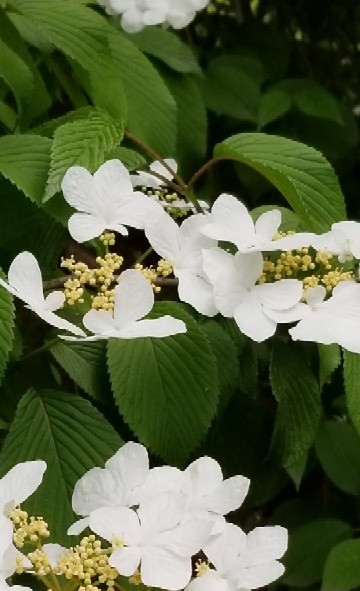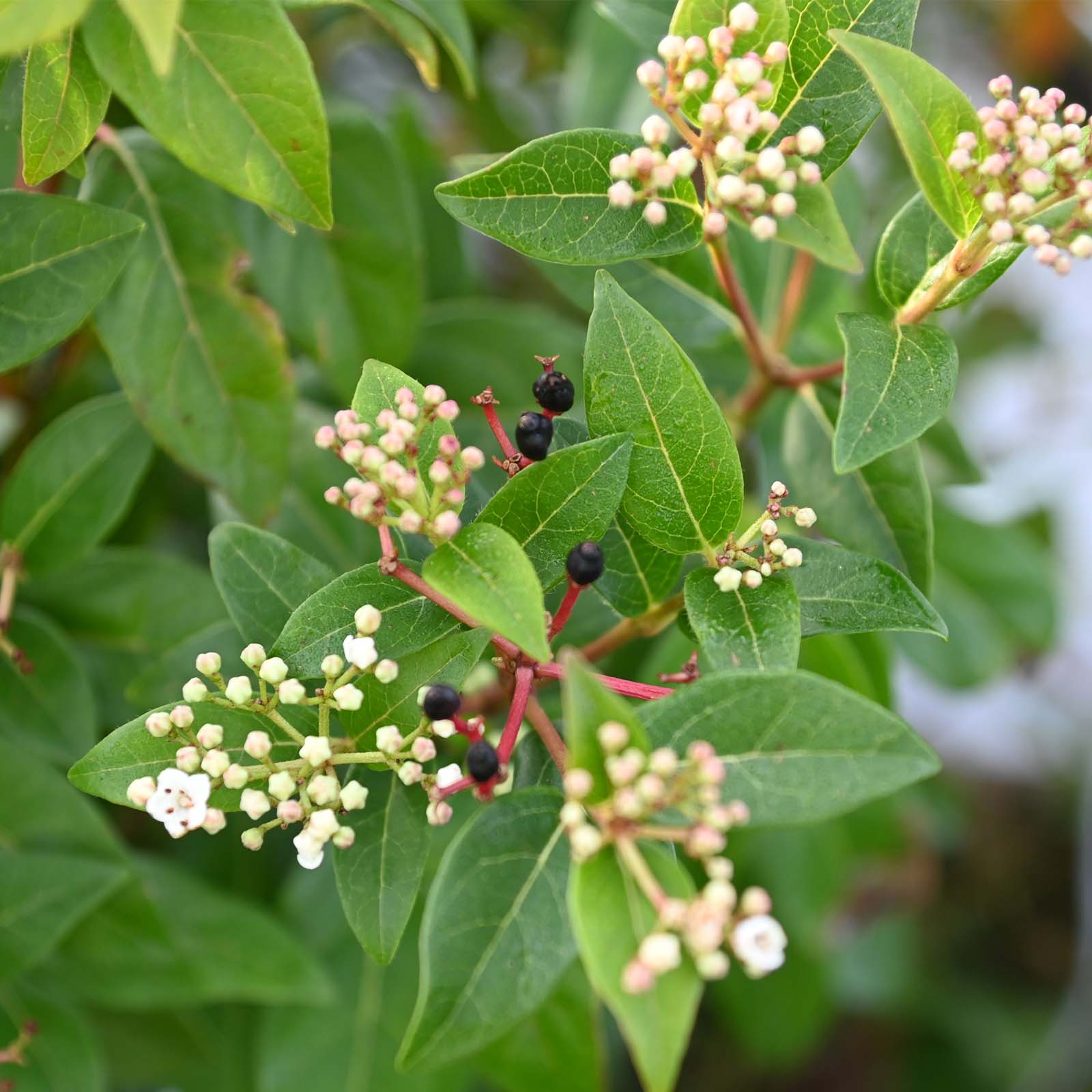Viburnum Flowers: The Versatile Shrub That Blooms All Season Long
Viburnum flowers are a sight to behold. They come in a variety of colors, from white to pink to blue, and they can bloom all season long. Viburnums are also relatively easy to care for, making them a popular choice for gardeners of all skill levels.
In this blog post, we will take a closer look at viburnum flowers. We will discuss the different types of viburnums, their blooming seasons, and their care requirements. We will also provide some tips on how to choose the right viburnum for your garden.
What are viburnum flowers?
Viburnum flowers are small, clustered blossoms that are typically white or pink. They can be found in a variety of shapes, including snowballs, lacecaps, and panicles. Viburnum flowers are often fragrant, and they can attract butterflies and other pollinators to the garden.
Types of viburnum flowers
There are over 150 species of viburnum, and each one has its own unique characteristics. Some of the most popular viburnum flowers include:
- Viburnum opulus, also known as snowball viburnum, is a deciduous shrub that produces large, white snowball-shaped flowers in the spring.

- Viburnum carlesii, also known as Koreanspice viburnum, is a deciduous shrub that produces clusters of pink flowers in the spring.

- Viburnum x bodnantense, also known as doublefile viburnum, is a deciduous shrub that produces long, cascading clusters of white flowers in the spring.

- Viburnum prunifolium, also known as blackhaw viburnum, is a deciduous shrub that produces clusters of white flowers in the spring and blue berries in the fall.

- Viburnum tinus, also known as evergreen viburnum, is an evergreen shrub that produces clusters of white flowers in the spring and black berries in the fall.

Blooming seasons of viburnum flowers
The blooming season of viburnum flowers varies depending on the species. Some viburnums bloom in the spring, while others bloom in the summer or fall. Some viburnums even bloom twice a year.
Care requirements for viburnum flowers
Viburnum flowers are relatively easy to care for. They prefer full sun to partial shade and well-drained soil. They should be watered regularly, especially during the hot summer months. Viburnums are also relatively pest- and disease-resistant.
How to choose the right viburnum for your garden
When choosing a viburnum for your garden, there are a few things to keep in mind:
- Size: Viburnums come in a variety of sizes, so choose one that will fit in the space you have available.
- Blooming season: If you have a specific blooming season in mind, choose a viburnum that blooms during that time.
- Sun exposure: Viburnums prefer full sun to partial shade.
- Soil type: Viburnums prefer well-drained soil.
- Hardiness zone: Viburnums are hardy in a variety of zones, so choose one that is suited for your climate.
Conclusion
Viburnum flowers are a beautiful and versatile addition to any garden. They come in a variety of colors, bloom all season long, and are relatively easy to care for. If you are looking for a low-maintenance shrub that will add color and interest to your garden, a viburnum is a great choice.
Viburnum flowers are a beautiful and versatile addition to any garden. With their delicate white blooms, they can add a touch of elegance to any landscape. But did you know that viburnum flowers also have a number of other benefits? For example, they can help to attract pollinators, such as bees and butterflies. They can also help to improve air quality by filtering out pollutants. And some species of viburnum flowers even have medicinal properties.
If you're interested in learning more about viburnum flowers, I encourage you to visit Garden Wiki. This website has a wealth of information about viburnum flowers, including their different species, growing requirements, and uses. You can also find a number of helpful articles and videos on this website.
FAQ of viburnum flower
Q: When do viburnum flowers bloom?
A: Viburnum flowers bloom in the spring or early summer, depending on the species. Some viburnums, such as the Koreanspice viburnum (Viburnum carlesii), bloom in early spring, while others, such as the snowball viburnum (Viburnum macrocephalum), bloom in late spring or early summer.
Q: How do I care for viburnum flowers?
A: Viburnum flowers are relatively easy to care for. They prefer full sun to partial shade and moist, well-drained soil. Water viburnum flowers regularly, especially during hot, dry weather. Fertilize viburnum flowers once a year in the spring with a balanced fertilizer.
Q: How do I propagate viburnum flowers?
A: Viburnum flowers can be propagated from cuttings, division, or seed. Cuttings are the most common method of propagation. To take a cutting, choose a healthy, semi-hardwood stem from a mature viburnum plant. The cutting should be about 4-6 inches long and have at least 3-4 leaves. Dip the cut end of the cutting in rooting hormone and plant it in a well-draining potting mix. Keep the potting mix moist and the cutting in a warm, sunny location. The cutting should root in about 4-6 weeks.
Q: What are some common pests and diseases of viburnum flowers?
A: Viburnum flowers are susceptible to a number of pests and diseases, including aphids, spider mites, scale insects, and powdery mildew. Aphids can be controlled with insecticidal soap or neem oil. Spider mites can be controlled with a miticide. Scale insects can be controlled with horticultural oil. Powdery mildew can be controlled with a fungicide.
Q: How do I deadhead viburnum flowers?
A: Deadheading viburnum flowers is important to encourage new blooms. To deadhead viburnum flowers, simply pinch off the spent blooms with your fingers. You can also use a pair of scissors to deadhead viburnum flowers. Deadhead viburnum flowers regularly throughout the blooming season to keep the plant looking its best.
Image of viburnum flower
5 different images of viburnum flower from Pinterest:
- Viburnum opulus, also known as snowball viburnum, has white, ball-shaped flowers that bloom in spring.

- Viburnum carlesii, also known as Koreanspice viburnum, has pink or white flowers that bloom in early spring.
- Viburnum macrocephalum, also known as Chinese snowball viburnum, has large, white flowers that bloom in late spring or early summer.
- Viburnum x bodnantense, also known as doublefile viburnum, has clusters of white flowers that bloom in late spring or early summer.

- Viburnum plicatum, also known as Japanese snowball viburnum, has flat-topped clusters of white flowers that bloom in late spring or early summer.

Post a Comment for "Viburnum Flowers: The Versatile Shrub That Blooms All Season Long"